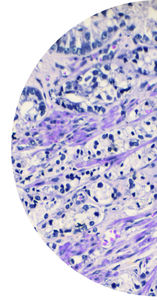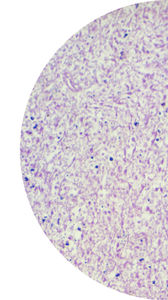
Cancer test kit PANCARNA™oncology
Add to favorites
Compare this product
fo_shop_gate_exact_title
Characteristics
- Applications
- for cancers
- Application field
- oncology
Description
Fusion genes are a major driver of tumorigenesis and tumor progression. They have been continuously incorporated into international definitive guides. Fusion genes are also important in determining diagnosis and prognosis. In solid tumors, each tumor type has tumor-specific fusions as well as those that are common to several cancers.
Solid Tumor Fusion Genes
1. Gene fusion partners have widely distributed breakpoints and non-fixed hotspots
Conventional IHC, FISH can’t distinguish between gene fusion partners
Fusion breakpoints are widely distributed and may exist in intron regions, DNA-level detection does not provide comprehensive coverage
2. DNA testing alone may lead to missed detections
Due to panel coverage constraints, 4-14% NSCLC patients that are negative for driver genes miss out on treatment opportunities
3. Fusion gene breakpoints detected at the DNA level cannot be used to infer functionally meaningful mRNA fusion patterns
A considerable proportion of “gene-intergenic region” fusions detected by DNA level sequencing do not produce functional fusion transcripts at the RNA level, suggesting that some fusion genes detected by DNA cannot be used as therapeutic targets
4. Conventional RNA-Seq struggles to discern transcriptional signatures of tumor tissues on small scales
RNA-Seq lacks sufficient sensitivity and resolution, and therefore requires higher sample quality and insufficiently detects low-abundance fusions
Pancarna™ uses targeted RNA sequencing technology to comprehensively detect gene fusions in solid tumors, with increased sensitivity and dynamic range compared to whole transcriptome RNAseq.
Catalogs
No catalogs are available for this product.
See all of Geneseeq‘s catalogsRelated Searches
- Assay kit
- Blood assay kit
- Plasma assay kit
- Molecular test kit
- Oncology test kit
- Tissue detection kit
- Genetic test kit
- Oncology test kit
- Genetic mutation detection kit
- FFPE tissues assay kit
- Cerebral test kit
- BRAF gene test kit
- Colorectal cancer test kit
- Lung cancer detection kit
- Genomic test kit
- Genomic DNA detection kit
- BRAF mutation detection kit
- NGS sequencing assay kit
- KRAS mutation detection kit
- Bone marrow assay kit
*Prices are pre-tax. They exclude delivery charges and customs duties and do not include additional charges for installation or activation options. Prices are indicative only and may vary by country, with changes to the cost of raw materials and exchange rates.






